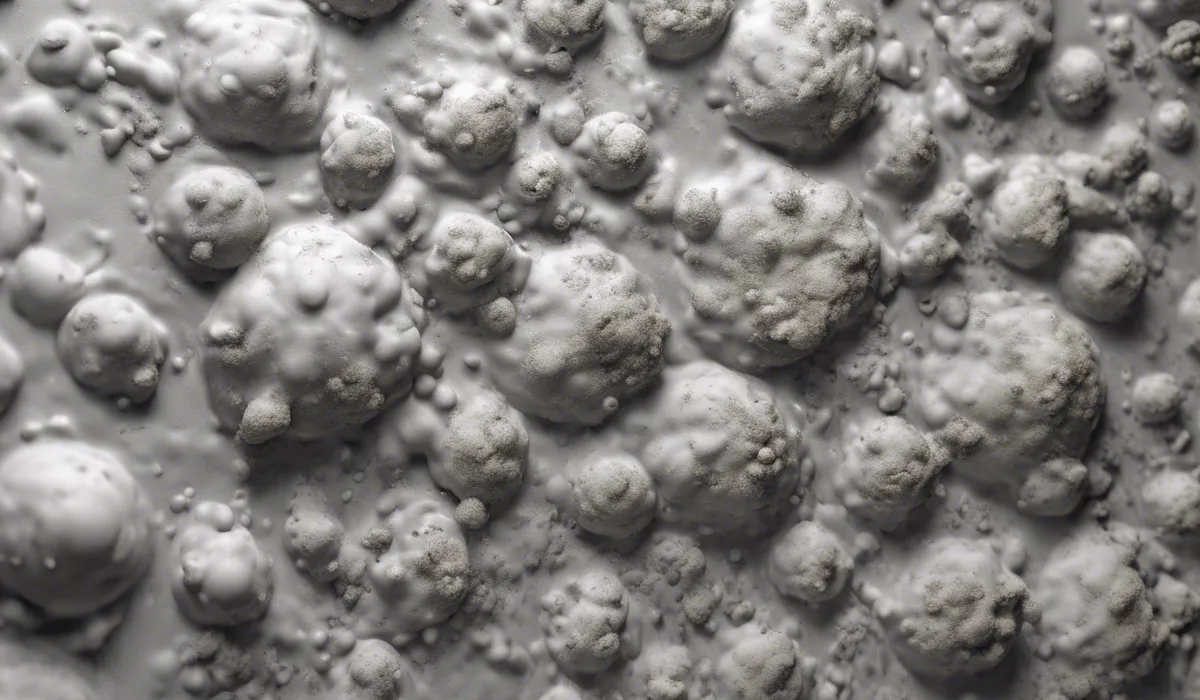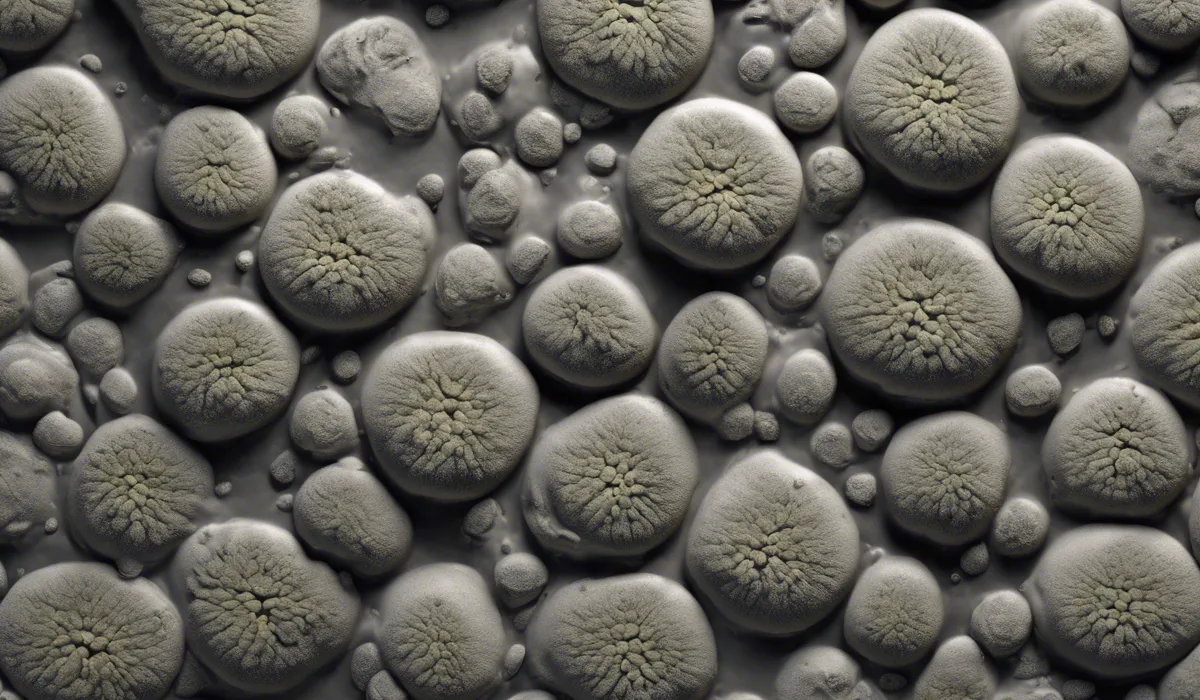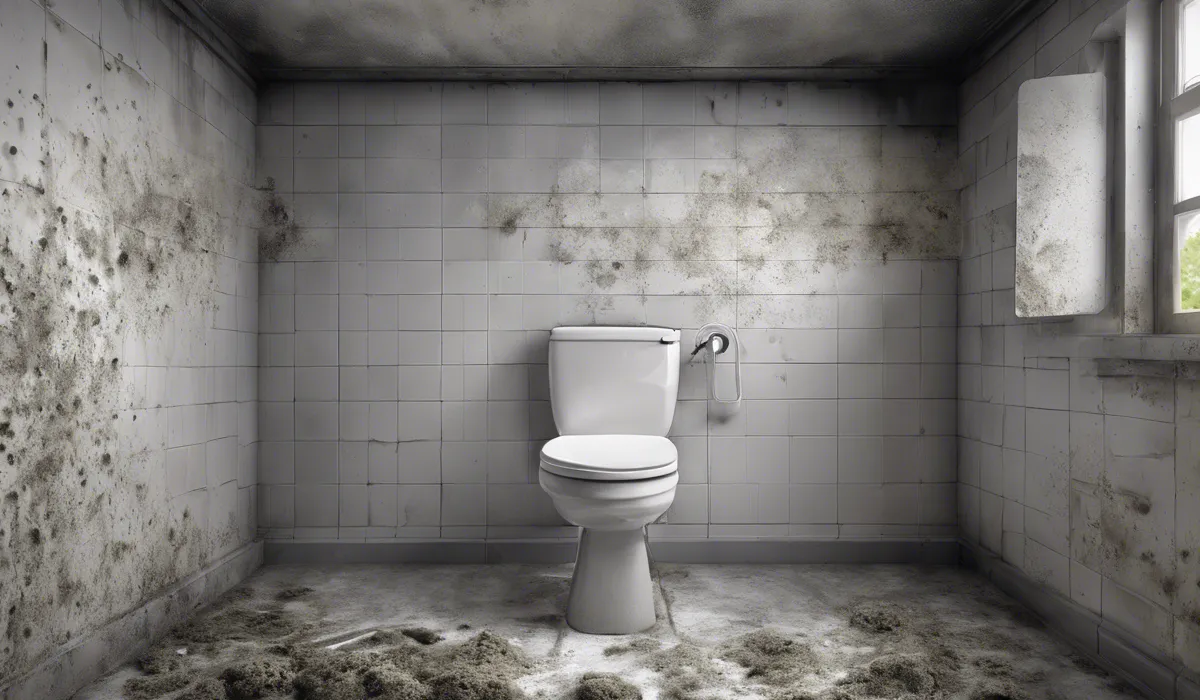Mold appearance varies; it often looks fuzzy or slimy and comes in colors like black, white, green, or red. It may present as spots or patches and can grow on multiple surfaces.
Recognizing Common Types of Mold

Common Molds: Aspergillus, Penicillium, and Stachybotrys
Understanding mold starts with recognizing the most common types. Aspergillus is a mold often found on food and in air conditioning systems.
It appears in various colors and has a spotty look. Penicillium can be blue or green and is usually found on food, walls, and insulation, with a velvety texture.
Stachybotrys, known as “black mold,” is especially concerning due to its potential health effects and has a slimy, dark appearance.
Color Variations
Mold comes in a palette of colors. Black mold is common and can be alarming due to its association with toxic mold. Green molds, like Penicillium, are also widespread.
White mold may blend in with the surface it grows on, making it harder to spot, while yellow molds, such as certain Aspergillus species, can also appear in homes. Each color can indicate a different type of mold or growth stage.
Textures of Mold
The feel of mold can tell you much about its type. Fuzzy molds are common on food and walls, and they may seem soft to the touch.
Slimy molds, such as Stachybotrys, often grow in wet areas and can feel slick. Powdery molds might indicate an older growth that has had time to dry out. Each texture provides clues to the mold’s age and best removal methods.
Color and Texture Combinations
Color and texture together help identify specific molds. A green, velvety texture may signify Penicillium, while a black, slimy surface is often Stachybotrys.
When you spot a fuzzy, white mold, it could be an early stage of many mold types. Understanding these combinations can aid in early detection and prompt removal.
Mold Growth Patterns and Locations

Spotting Mold Growth Patterns
Mold growth can present as irregular spots, dense clusters, or long streaks. Spots often appear first, signaling the start of mold growth.
Clusters can indicate a larger, more established mold presence. Streaks typically occur from water exposure, such as leaks that allow mold to travel with the moisture.
Typical Mold Habitats: Bathrooms, Basements, Kitchens
Mold thrives in moist, warm environments. Bathrooms are prime mold locations due to constant humidity. Basements can harbor mold in damp corners or on walls.
Kitchens, with their frequent water use and possible food sources, are also common mold sites. Regular cleaning and ventilation can help prevent mold growth in these areas.
Environmental Conditions for Mold
Mold loves moisture, warmth, and stagnant air. High humidity or unresolved water damage can lead to mold growth.
Warm temperatures accelerate mold expansion, while poor ventilation traps moisture and creates an ideal environment for mold to flourish. Keeping areas dry, cool, and well-aired can mitigate these conditions.
Recognizing Mold-Friendly Climates in Homes
Some homes are more prone to mold than others. Homes in humid climates, with poor insulation or lacking in adequate ventilation, can be mold magnets.
Regular inspections for leaks, condensation, or high humidity can help homeowners prevent mold issues before they escalate.
Health and Safety Considerations

Signs of Mold in Your Environment
Physical signs of mold include a musty odor that can point to hidden mold. Health symptoms like allergies or respiratory issues when indoors can also indicate a mold problem. Paying attention to these signs can lead to early detection and remediation.
Mold Exposure and Health Risks
Different molds can cause varying health risks. While some people may experience mild allergic reactions, others may suffer from more severe respiratory issues.
Prolonged exposure to toxic molds like Stachybotrys can lead to chronic conditions. Understanding these risks is crucial for maintaining a healthy home environment.
Safe Mold Removal Practices
Removing mold safely is essential to protect your health. Small areas of mold can often be cleaned with proper protective gear and cleaners.
However, for large or toxic mold infestations, it’s important to use professional services to ensure thorough removal and prevent health risks.
When to Call Mold Remediation Professionals?
If you’re facing an extensive mold issue or if the mold returns after cleaning, it’s time to call the professionals.
They have the tools and expertise to handle large-scale mold problems safely and effectively.
Remember, addressing mold promptly can prevent significant health concerns and property damage.
FAQs About Mold Appearance
What does mold typically look like?
Mold often appears as fuzzy or slimy and can be black, white, green, or red in color.
Can mold appear in different colors?
Yes, mold can come in a variety of colors, including but not limited to black, white, green, and red.
What does black mold look like?
Black mold typically looks like dark black or greenish-black patches or spots that may appear slightly fuzzy or slimy.
How can I identify mold on surfaces?
Mold can be identified by its spotty or patchy appearance, often with a fuzzy or slimy texture, on various surfaces.
Does mold only grow in large patches?
No, mold can present itself as small spots or large patches, depending on the extent of growth and the conditions of the environment.
Final Thoughts
Mold’s appearance is not uniform, often presenting as fuzzy or slimy textures in a variety of colors such as black, white, green, or red.
It typically manifests as spots or patches and is capable of growing on a multitude of surfaces, indicating its adaptability and proliferation in different environments.
